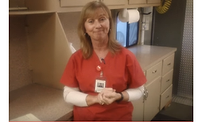Accounts Receivable: How Much is too Much?




Well it’s about that time of year - you’ve been busy, but the busier you’ve gotten, the tighter your money has gotten. Have you figured out what the problem is yet? Let me suggest a few possible reasons for your shortage of cash:
- You did not ask for any down payment money.
- You did not ask for and set up a draw schedule for how you would be paid.
- You did not have a contractual document for the company to use to address how the job would be paid for.
- You did the job to best of your ability without any payment towards the job.
- The adjuster was slow to approve your completion invoice.
- Your clients are not aware of your written payment policy.
- You do not yet have a written process to collect your receivables.
I know that I could continue this list, but there’s no need - I think you get the point. What then happens is the owner becomes puckered and starts screaming at everyone to get some money collected. Most of us will then go into a full-court press and try to get some money collected. Yes the money is owed, but I assure you that people do not like being pushed for money. To make it worse, even though they know they owe you the money, they think you are pushing them for something that usually isn’t their fault.
I went back and looked at my database to see if there might be some data to help us better understand what has gone on in the past. I was very surprised with the data that I found over the past 5+ years. As a result of that, I would like to suggest some ways that you might use this data in the future. Over the many years of working with contractors, I constantly heard them telling each other in meetings that their accounts receivable (A/R) were “too high.” When pressed for how they judged what was “too high” and what was not, there were at least as many opinions as there were individuals. From that point, I started keeping track of A/R’s as a percent of total sales. I’ve listed the data from 2009 forward to mid-2014. As a result of our reporting process, I will not have the completed 2014 numbers until June of this year:
- 2009 – 16%
- 2010 – 17%
- 2011 – 18%
- 2012 – 18.2%
- 2013 – 17.5%
- Mid-2014 – 26%
When I averaged the years of 2009 thru 2013, I got an average of 17.34%. When I compared the average of 17.34% for five years against a partial year in 2014 of 26% it was a jump of 50%.
What happened?
Remember when we were whining about having little to no work and then in comes a massive winter storm last January 2014? We worked and worked and worked in a maximum effort to help in every way we could. As a result, a lot of companies dropped their accounts receivable efforts to try and service policy holders in their time of need. My suggestion is that both efforts need to be handled with equal effort.
Unfortunately, it is all too typical of companies to work as hard as they can, while not worrying about how they operate in normal business times. As a result of their maximum work efforts and not operating within their normal best practices, their profitability decreases below their normal net profit level. Now to top it off, their receivables were 50% higher than normal and they were sucking canal water for cash for their regular company operations.
So, if one were to be in this type of situation in the future what should one consider doing differently?
- You need to decide what types of jobs you are going to focus on signing up and turn down all other jobs.
- You need to know how and when you are going to be paid.
- You need to have written policies and procedures for all of the company to know, view and operate within.
- You need to have a daily meeting with all department heads as to where things are and what they need help with.
- You need to lead the company.
Wishing both you and your company your regular net profit in your next CAT loss!
Looking for a reprint of this article?
From high-res PDFs to custom plaques, order your copy today!









